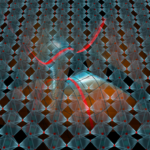 Our new paper on the surface layer of Sr2RuO4 has appeared in Advanced Materials (Early View). Check it out to see how checkerboard charge order and nematicity emerge at the surface of the enigmatic superconductor Sr2RuO4, a material that continues to surprise. Our work raises interesting questions as to what one can learn from the surface electronic structure about bulk instabilities of a material.
Our new paper on the surface layer of Sr2RuO4 has appeared in Advanced Materials (Early View). Check it out to see how checkerboard charge order and nematicity emerge at the surface of the enigmatic superconductor Sr2RuO4, a material that continues to surprise. Our work raises interesting questions as to what one can learn from the surface electronic structure about bulk instabilities of a material.
Publications
New paper: Superconductivity in non-centrosymmetric Sn4As3
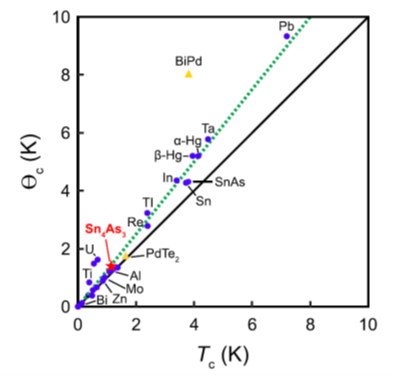 Our paper on the non-centrosymmetric superconductor Sn4As3 has been published in New Journal of Physics. Using our millikelvin STM, we show that Sn4As3 is a type-I superconductor, and have studied its electronic structure in detail. Check it out here.
Our paper on the non-centrosymmetric superconductor Sn4As3 has been published in New Journal of Physics. Using our millikelvin STM, we show that Sn4As3 is a type-I superconductor, and have studied its electronic structure in detail. Check it out here.
New paper: Manipulating magnetic order in FeTe
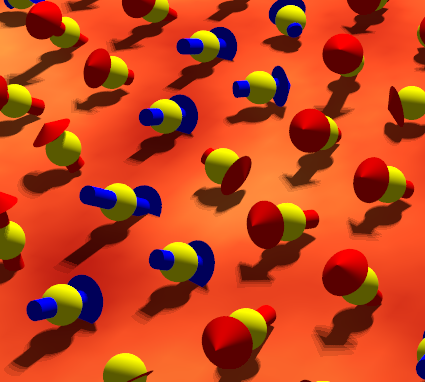 Our paper on imaging and manipulating magnetic order of FeTe in vector magnetic fields has appeared in Science Advances, see https://goo.gl/8f2v9c. It shows how we can use spin-polarized STM not only to investigate surface magnetic order, but also to manipulate it.
Our paper on imaging and manipulating magnetic order of FeTe in vector magnetic fields has appeared in Science Advances, see https://goo.gl/8f2v9c. It shows how we can use spin-polarized STM not only to investigate surface magnetic order, but also to manipulate it.
See also Christopher Trainer’s talk at the APS March meeting on this, on Monday, March 4 at 3.54pm (Talk C06:8).
Other talks by the group include talks on Quasiparticle Interference on minerals (by Carolina De Almeida Marques, talk A33.3 (Monday 8.24am) and on a strain-stabilized charge density wave in LiFeAs by Chi-Ming Yim, talk A10.4 (Monday 9.00am).
Highlight: Strain-stabilization of a new smectic order
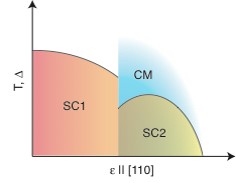 Our recent paper on the Discovery of a strain-stabilized smectic electronic order in LiFeAs is an Editors’ highlight in Nature Communications. Our work combines atomic-scale imaging by low temperature scanning tunneling microscopy with uniaxial strain. Straining the iron-based superconductor LiFeAs reveals the emergence of a new modulated phase, representative of a smectic electronic order. Tunneling spectra of the superconducting gap in this phase show a substantially modified superconducting order parameter.
Our recent paper on the Discovery of a strain-stabilized smectic electronic order in LiFeAs is an Editors’ highlight in Nature Communications. Our work combines atomic-scale imaging by low temperature scanning tunneling microscopy with uniaxial strain. Straining the iron-based superconductor LiFeAs reveals the emergence of a new modulated phase, representative of a smectic electronic order. Tunneling spectra of the superconducting gap in this phase show a substantially modified superconducting order parameter.
Our results highlight the importance of electron-lattice coupling in the iron-based superconductor LiFeAs.
Read more in our article in Nature Communications.
New paper: Dirac Surface States and Nature of Superconductivity in Noncentrosymmetric BiPd
Supercondu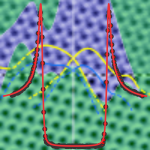 ctivity in non-centrosymmetric material promises to be unconventional, the lack of spatial inversion symmetry allows for a triplet component of the order parameter. For various non-centrosymmetric materials, evidence for a triplet component of the order parameter has been put forward.
ctivity in non-centrosymmetric material promises to be unconventional, the lack of spatial inversion symmetry allows for a triplet component of the order parameter. For various non-centrosymmetric materials, evidence for a triplet component of the order parameter has been put forward.
In this paper, we show that in BiPd superconductivity looks much more conventional when zooming in to the atomic scale by ultra-low temperature scanning tunneling microscopy (STM). What’s more, STM results are consistent with macroscopic characterization by specific heat, whereas electric transport measurements are not – suggesting that electric transport detects signatures from defects in the material rather than being representative of bulk behaviour.
Our measurements further show signatures of Dirac surface states, confirmed by relativistic ab-initio calculations.
Read the full paper at
- Z. Sun, M. Enayat, A. Maldonado, C. Lithgow, E. Yelland, D.C. Peets, A. Yaresko, A.P. Schnyder and P. Wahl, Dirac Surface States and Nature of Superconductivity in Noncentrosymmetric BiPd, Nat. Commun. 6, 6633 (2015) (open), arxiv/1407.5667.
